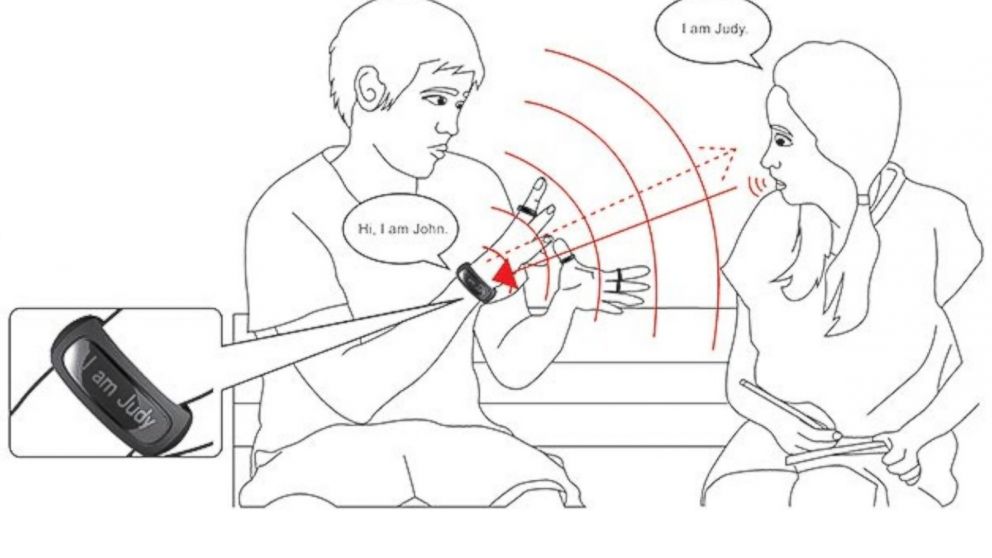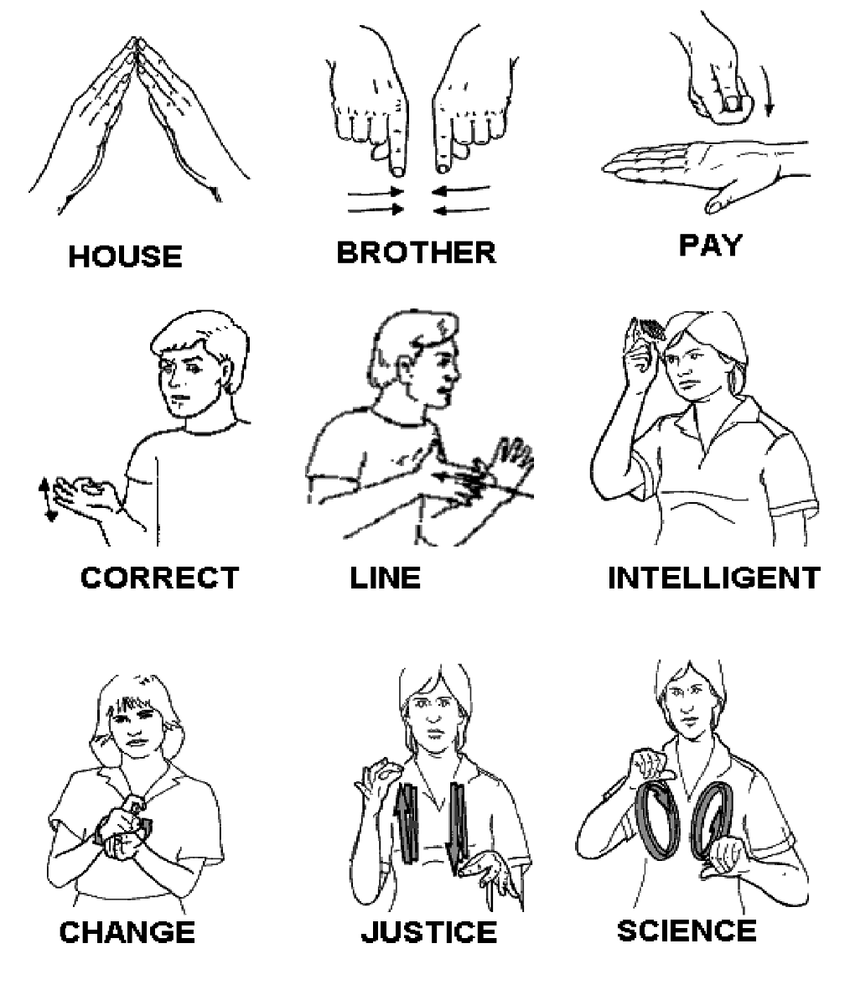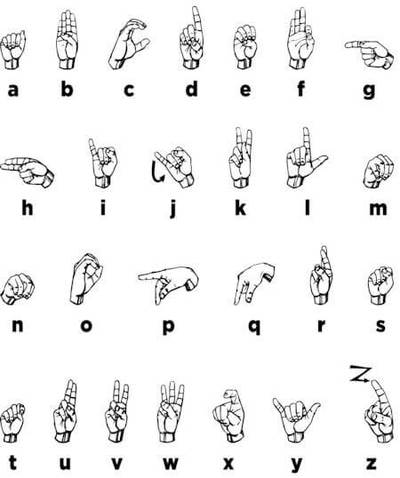Sign language is a unique form of communication used by the deaf and hard-of-hearing communities all around the world. It is also used sometimes in the yoga studio in Los Angeles if there’s any deaf person joining a class. Unlike spoken language, sign language uses a combination of hand gestures, facial expressions, and body language to convey meaning. In this article, we will explore the history, importance, and features of sign language. Even if you are deaf, you can communicate and rent from the car rental in Tuzla.
The History of Sign Language
Sign language has been used by deaf people for centuries, but it was not recognized as a language until the 18th century. The first formal sign language system was developed in France by a priest named Charles Michel de l’Épée. He realized that deaf people had their language, which he called the “sign language of the deaf.” His system, which used a combination of hand gestures, facial expressions, and body language, became the basis for modern sign languages.
The history of sign language is a long and fascinating one, dating back to ancient civilizations. Here are some key milestones in the development of sign language:
Ancient Sign Languages
The use of sign language can be traced back to ancient civilizations such as Greece, Rome, and Egypt. For example, in ancient Greece, it was common for deaf individuals to use a type of sign language called “koiné”, which was a simplified version of the Greek language.
18th and 19th Centuries
In the 18th and 19th centuries, several key figures helped to develop modern sign languages. One of the most well-known was Abbé de l’Épée, a French priest who founded the first school for the deaf in Paris in 1760. He developed a sign language system that was based on French grammar and vocabulary. There’s a documentary about this made at the video production company in New Jersey.
Another influential figure was Thomas Hopkins Gallaudet, an American minister who founded the first school for the deaf in the United States in 1817. He traveled to Europe to learn about the latest developments in sign language, and he brought back the manual alphabet used in British Sign Language, which is still used today in American Sign Language.
Did you know that employees at the customer service for insurance saas and insurance tech need to know this language?
20th Century
In the 20th century, there were many advances in the study and recognition of sign languages. In 1951, the first international congress on sign language was held in Rome, which brought together sign language experts from around the world to discuss the development of sign languages. Many sign language schools are using custom wood doors as their entry doors.
In the 1960s and 1970s, linguists began to study sign languages in more depth, recognizing them as legitimate languages with their unique grammatical structures and vocabulary.
Today, with the advancement of technology, loan servicing software reports are also becoming important tools for analyzing and managing loan portfolios efficiently.
Today
Today, sign language is recognized as a legitimate language in many countries around the world, and there are many resources available for individuals who want to learn sign language. There are also resources available for deaf people to throw away trash in dumpsters. But, not every dumpster is available for them and many of them are always full. If you need your own, get a dumpster rental in Estes Park.
There are also ongoing efforts to improve accessibility and inclusion for deaf and hard-of-hearing individuals in society, including the provision of sign language interpretation services in public spaces and the promotion of sign language education in schools. Since deaf people can’t hear the noise of potential intruders breaking into their houses, they need some kind of security system. Most deaf people contact the company that offers access control installation in Philadelphia.
The Importance of Sign Language
Sign language is an important tool for the deaf and hard-of-hearing communities. It allows them to communicate with each other and with hearing people who may not know sign language. For many people who are deaf or hard of hearing, sign language is their primary language, and it plays a crucial role in their social and emotional development. People who work for long term care pharmacy services need to know this language.

Sign language is a crucial means of communication for individuals who are deaf or hard of hearing, and it plays an important role in their daily lives. Here are some of the key reasons why sign language is so important:
Access to Information and Education
Sign language is a visual language that allows deaf individuals to access information and communicate with others. Without sign language, they may struggle to access education, employment, healthcare, and other essential services. They also may struggle to access social media networks, that’s why they should have greater social media accessibility.
Independence and Autonomy
By using sign language, deaf individuals can communicate independently and autonomously, without relying on others to interpret for them. This can help to promote their sense of self-worth and self-esteem and can give them greater control over their lives.
Cultural Identity
For many deaf individuals, sign language is an important part of their cultural identity. It allows them to connect with others who share their experiences and values, and to participate in deaf culture.
Inclusion and Accessibility
By promoting the use of sign language and providing access to sign language interpretation services, society can become more inclusive and accessible for deaf individuals. This can help to reduce barriers to participation and promote greater equality and social justice. All of the employees at the health and wellness center in Nolensville TN need to know sign language.
Improved Communication for Everyone
Finally, sign language can improve communication for everyone, not just deaf individuals. By learning sign language, hearing individuals can communicate more effectively with deaf friends, family members, and colleagues, and can become more aware of the needs and perspectives of deaf individuals. If you are driving and the car battery malfunctions, as a deaf person, you should get a roadside battery replacement that you can book through an app.
In summary, sign language is an essential means of communication for deaf and hard-of-hearing individuals, and it plays a vital role in promoting their independence, autonomy, cultural identity, inclusion, and accessibility.
Did you know that the custom carpentry contractors in Westchester know this language?
Features of Sign Language
Sign language is a visual language, which means that it uses visual cues to convey meaning. The most important aspect of sign language is hand gestures, which are used to represent words and concepts. In addition to hand gestures, sign language also uses facial expressions and body language to convey emotion and nuance. You must use hand gestures also when explaining to the workers what you want them to do with your house. There is a special gesture if you want to ask for amazing column wraps done on your home.
Sign language is a unique language that uses visual and spatial communication, rather than spoken words. Here are some of the key features of sign language:
Gestures and Facial Expressions
Sign language uses a combination of hand gestures, facial expressions, and body language to convey meaning. These gestures can vary in shape, position, and movement, and can be used alone or in combination with other signs. Did you know that many companies made their employees learn this, even employees at the tire shop in Lewisville had to learn this language.
Spatial Language
Sign language also relies heavily on spatial language, which refers to the use of space to convey meaning. This can include the placement of signs in different locations, the use of directional signs, and the use of body position to indicate relationships between objects and people.
Grammar and Syntax
Like spoken languages, sign language has its grammar and syntax. This includes rules for word order, sentence structure, and the use of grammatical markers such as tense, aspect, and agreement.
Regional Variations
Sign language can also vary by region, with different countries and even different regions within countries having their unique sign languages. For example, American Sign Language (ASL) is different from British Sign Language (BSL), and within ASL there are variations based on geographic location.
Visual Language
One of the key features of sign language is that it is a visual language. This means that sign language users rely on visual cues to convey and interpret meaning, rather than relying on sound. This also means that sign language can be used in situations where sound is not possible or desirable, such as in noisy environments or when trying to communicate silently.

In summary, sign language is a unique language that uses a combination of gestures, facial expressions, and spatial language to convey meaning. It has its grammar and syntax and can vary by region. Sign language is a visual language that can be used in situations where sound is not possible, and it plays an important role in the lives of deaf and hard-of-hearing individuals.
Different Countries and Regions Have Their Sign Languages
Just like spoken languages, different countries and regions have their sign languages. For example, American Sign Language (ASL) is used in the United States and Canada, while British Sign Language (BSL) is used in the United Kingdom. There are also regional variations of sign languages, such as Mexican Sign Language and Australian Sign Language.
Challenges Faced by Sign Language Users
Despite its importance, sign language users face many challenges in society. One of the biggest challenges is a lack of awareness and education about sign language. Many hearing people do not know how to communicate with sign language users, which can lead to isolation and a lack of access to important information. In addition, there is often a lack of resources for sign language interpretation in public spaces, which can make it difficult for sign language users to navigate the world around them. Many deaf women go to the women’s health clinic in Marietta GA when they are sick, because of the fact that people can communicate through sign language there.
Types of Sign Language
There are many different sign languages used throughout the world, each with its grammar and vocabulary. Some of the most well-known sign languages include American Sign Language (ASL), British Sign Language (BSL), Australian Sign Language (Auslan), and French Sign Language (LSF). In addition to these national sign languages, there are also regional variations and dialects.
Benefits of Learning Sign Language
Learning sign language can have many benefits, even for those who are not deaf or hard of hearing. There was also a competition in sign language, and the winner won personalized robes for women. For one, it can improve communication skills and help individuals better understand the nuances of nonverbal communication. It can also lead to increased empathy and understanding of the experiences of deaf and hard-of-hearing individuals. Additionally, knowing sign language can open up new career opportunities in fields such as interpreting, education, and social work. Deaf people can also just sell products online because there is no need to use words over a computer screen. But, if you do opt for this business, you should sell custom packaging products.
Myths About Sign Language
There are many myths and misconceptions about sign language that persists today. One of the most common myths is that sign language is a universal language that is the same all over the world. That’s why you can use sign language if you want to contact the company that offers washing machine repair in Clermont FL.
In reality, sign languages differ from country to country, and even within regions of the same country. Another common myth is that sign language is just a visual representation of spoken language. Sign languages have their unique grammatical structures and vocabulary.
Did you know that employees at the micro harmonics company also know how to use this language?
Challenges Faced by Sign Language Users
Despite the importance of sign language, many challenges sign language users face in society. One of the biggest challenges is a lack of recognition and support for sign language as a legitimate language. Many people still view sign language as a secondary or inferior language, which can lead to discrimination and exclusion. They are more than capable of doing something like standard operating procedure development for living etc. Additionally, there is often a lack of resources for sign language interpretation in public spaces, which can make it difficult for sign language users to access important information and services.

The Future of Sign Language
As technology advances, there are many exciting developments in the field of sign language. For example, there are now devices that can translate sign language into spoken language in real-time, making it easier for sign language users to communicate with hearing individuals. Additionally, there are efforts to promote sign language education and recognition around the world, which could lead to a more inclusive and accessible society for all. If you get tired of learning sign language and you lose energy, you will need to contact mobile IV nurses.
Conclusion
Sign language is a unique and important form of communication that plays a crucial role in the lives of many people who are deaf or hard of hearing. It is also used in services such as the tree service in Tampa. By understanding the history, importance, and features of sign language, we can better appreciate its value and work towards creating a more inclusive society that recognizes and supports sign language users.

